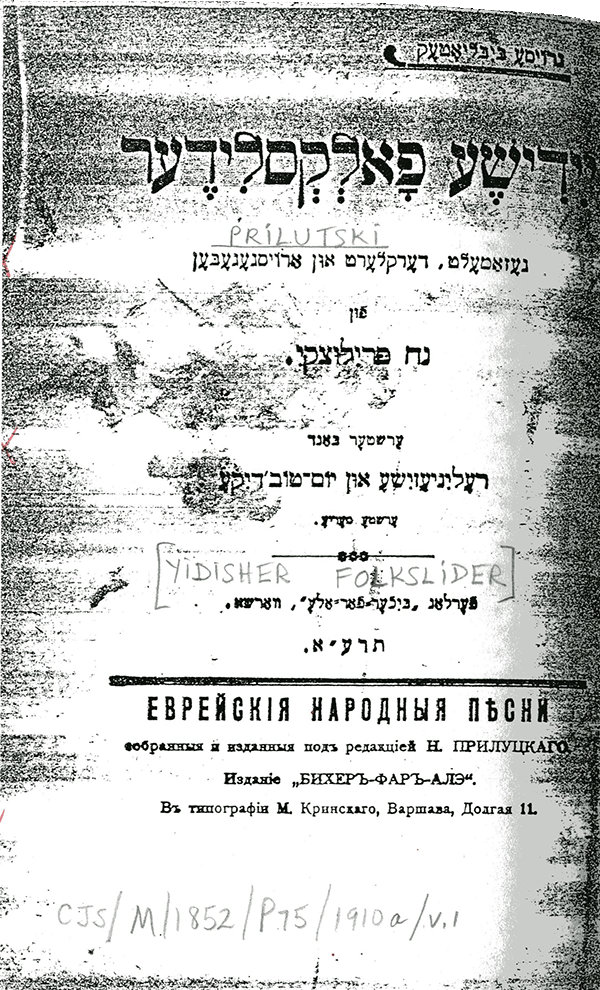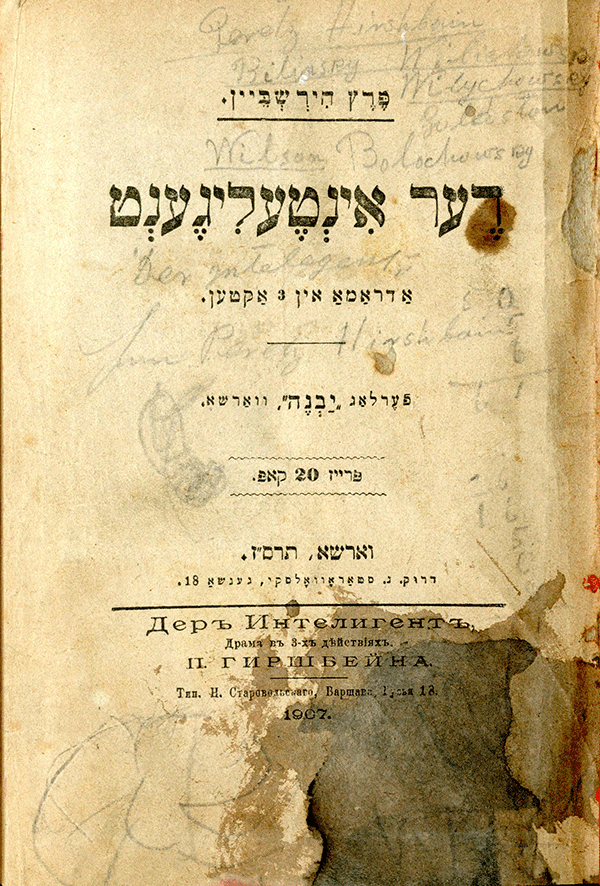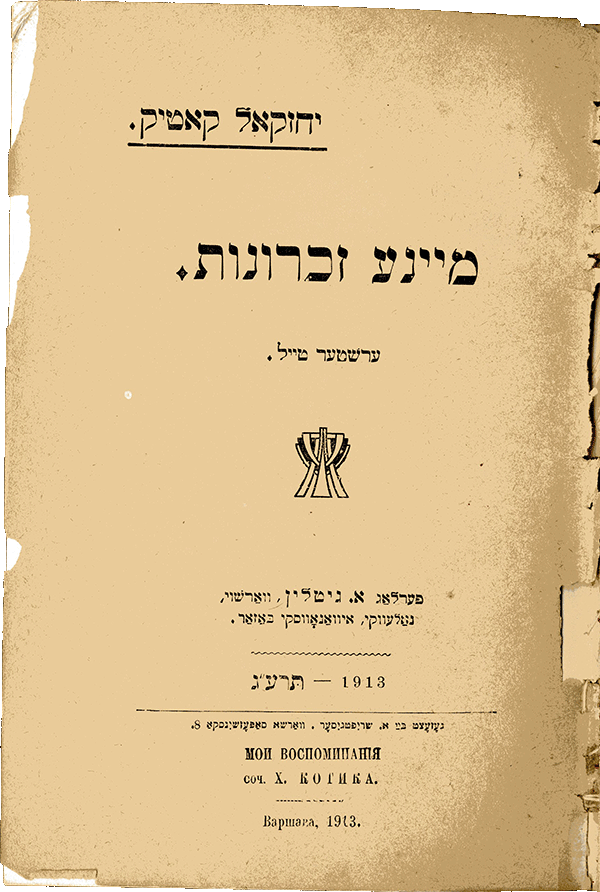The rapid growth of Warsaw in the second half of the nineteenth century and a series of new government regulations produced an array of cultural and political activities for many of the city's 300,000 Jewish residents in the early twentieth-century. While many of these modernizing projects advocated secular platforms, many of them were also imbued with key aspects of traditional Jewish society, culture and religion.
One of the more prominent figures in the new Jewish cultural sphere was the journalist, folklorist, and political leader Noah Prylucki. In addition to publishing the immensely popular Warsaw Yiddish dailies Der veg and later Der moment, Prylucki was repeatedly drawn to "the people." As part of his interest in "the Jewish folk," Prylucki headed a folklore and ethnographic group in Warsaw. The group's activities led to the publication of the two-volume collection Yiddish Folk Songs, the first of which was dedicated to "Religious and Holiday Songs" (Figure #1, Prylucki's Yidishe folkslider, volume 1).
This tension between a secularizing agenda and the very folk that these projects were determined to rehabilitate was one of the central themes of the Yiddish play, Der inteligent (The Intellectual) which was written by Peretz Hirschbein and published in Warsaw in 1907. Like other members of the Jewish intelligentsia, Hirschbein enjoyed many aspects of the new Jewish culture
Yehezkel Kotik was another Jewish resident of Warsaw who found himself drawn to the modern city while yearning for more traditional communities. Kotik, who vividly recalled his experiences in his memoirs Mayne zikhroynes,ran a coffee house in the heart of Warsaw's Jewish neighborhood. Like the Jewish newspaper and the Yiddish theater, Kotik's coffee house provided a new, ostensibly secular space where Jewish urbanites could partake in new cultural activities while still maintaining many traditional modes of socialization, interaction and culture (Figure #3, cover page ofMayne zikhroynes).
Thus, while all three cases


